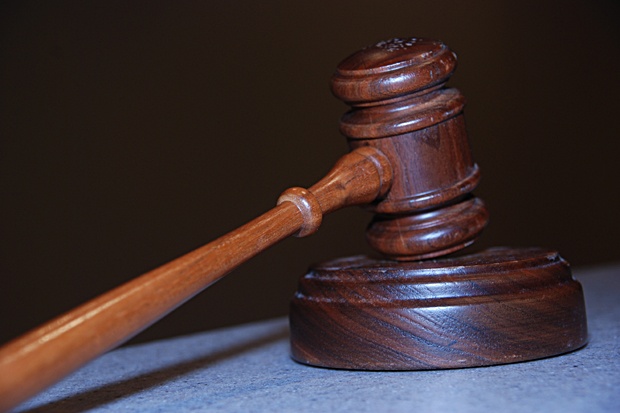This is the sixth of the 2012 LegalTech New York (LTNY) Thought Leader Interview series. eDiscoveryDaily interviewed several thought leaders at LTNY this year.
Today’s thought leader is Ralph Losey. Ralph is an attorney in private practice with the law firm of Jackson Lewis, LLP, where he is a Partner and the firm's National e-Discovery Counsel. Ralph is also an Adjunct Professor at the University of Florida College of Law teaching eDiscovery and advanced eDiscovery. Ralph is also a prolific author of eDiscovery books and articles, the principle author and publisher of the popular e-Discovery Team® Blog and founder and owner of an intensive online training program, e-Discovery Team Training, with attorney and technical students all over the world.
Our interview with Ralph had so much good information in it, we couldn’t fit it all into a single post. So, today is part one. Part two will be published in the blog tomorrow!
Many people are saying that 2012 is the year of technology assisted review. What do you think needs to happen for that to come true?
Well, many things. First of all, we need to have better training for lawyers so that they'll know how to use the technology. If you bring an advanced computer to anyone, they're going to need some kind of instruction on how to use it. You have to have people trained to use the tools. That's very important and I spend a lot of time focusing on training in my firm and around the country to other attorneys and bar groups. The tool alone really can't do much or help you unless you fit in the use of it into a larger, legal methodology.
In other words, just bringing in technology in itself doesn't answer any questions. It may answer some, but it doesn't give you the answers you need in order to use it in your practice.
I'm a legal practitioner. I've been practicing law, for, I guess about 32 years now. So, that's how I look at technology – as tools to practice law and represent clients. And, the truth is most people don't know how to use predictive coding yet, so we're going to have a training and learning curve like you do with any new technology.
Vendors also need to start bringing the prices down so that it's more affordable and make it accessible to a large number of attorneys, rather than just a few attorneys that can afford to handle it in large cases. I've been complaining about this to vendors for a while now. The good news is I think that they're listening. I'm beginning to see prices come down and I think this trend will continue. It's in their own best interest to do that because in the long run, they are going to be more successful in bringing this technology to attorneys and making money for their companies if they look at more of a large scale, larger volume, lower profit as opposed to making larger amounts of profit and fewer projects.
I think most of the vendors are receptive to that. The reason they probably just don't jump on it right away is the demand isn’t there yet. Build it and they will come. But, they're only coming in small numbers. When they're only coming in small numbers in order to pay for their business, they have to charge a lot.
So, it's a circle. It comes back again to training. An educated consumer will want this. I want this. I like it, and I want it affordable.
Do you think that it's just merely a matter of bringing prices down? Or is it being creative in how you price differently?
Well, it's both. The bottom line is always the bottom line, but it’s important to get there in a way that's win-win for both the consumer (law firms and corporate law departments) and for the provider. So, there needs to be creative solutions. As a result, I think people are now “putting on their thinking caps” and coming up with new ways to price solutions because there are different needs. I have my own ideas on how I want to use it, and so I want people to price accordingly. I don't want there to be a “one-size-fits-all” type of solution. I think the vendors are hearing that, too.
You had a recent blog post about bottom line proportional review and you noted that the larger cases have a lot at stake, so the budget is much higher. How does it work for smaller cases?
It's going to take a legal method, and I think that the method I described (bottom line proportional review) is the way to make it happen. In order to make bottom line driven review (where you're basically setting a budget up front) to be acceptable to the requesting party, they're going to want to make sure that this isn't just another way to “hide the ball”. They're going to want to make sure that they can find the relevant evidence that they need to evaluate their case to either see that they've got a winning case (so they can move for a summary-judgment, establish a strong settlement position, or go to trial) or see that they have a weak case and value it accordingly.
We all want to find out as quickly as possible how good a case it is. We really don't want to spend all of our time and money just doing discovery. The whole point of discovery is to discover how good your case is and then resolve it.
I'm very oriented to resolving cases. That's really most of my life. I wasn't an eDiscovery lawyer most of my career. I was a trial lawyer, and I think that perspective is lacking from some of the vendors and some of the analysts and some of the other people in eDiscovery. People seem to think discovery is an end in itself. It's not. It's just a way to prepare for trial.
So, there is no reason to get all of the relevant evidence. That's an archaic notion of the past. There's too much relevant evidence. All that counts is the important relevant evidence. The smoking guns are what counts. The highly relevant or hot documents are what counts.
You do have to wade through some relevant documents to get there, but the point is to get there. It gets back to my “seven plus or minus two” rule. It's not my rule. It's an old rule of persuasion. That's never going to change. People are never going to remember more than seven documents at a trial. They just can't. The juror's mind is not capable of it.
Lawyers can handle probably several hundred exhibits, and they can keep it in their head. But, they don't make the decisions. And, the several hundred exhibits are merely predicates or evidentiary foundations in order to get the key exhibits out there that you then use in your closing argument.
The point of discovery and litigation is to identify and locate these key documents. When you understand that, then you'll accept and understand the fact that you don't need all relevant information, all relevant documents. You just need the most highly relevant documents so that you can feel pretty confident you've got the handful of documents you need to try the case.
The thing that’s exciting about predictive coding is its ranking abilities. You don't have to look at the junk that's not really that relevant. You only look at the most relevant documents, whether it’s the most relevant 5,000, 50,000 or 100,000. Whatever it is that's appropriate to your size case. You're not going to look at 100,000 documents in a $250,000 dollar discrimination case. It makes no sense.
That's where you get back to proportionality. It's a somewhat long answer to your question, but people need to understand that this isn't a way to hide the truth. It's really a way to get the truth out there in an efficient, economic manner.
So, based on the five dollar per document review cost example in your post, if you have $25,000 to spend, you can review the top 5,000 documents, right?
That's right. And the five dollars is just like a working number that you use. Some document collections can be even more expensive and difficult. For example, a collection with a lot of 20-page spreadsheets (where you actually determine what's confidential and what's not in each sheet) can drive that number up. Banking cases are a nightmare. You've got all this financial information, where some of it's relevant and some of it's not. For other cases, it can be a lot cheaper. But, you also have to take some vendor claims with a big grain of salt. “Oh, I'll do your whole thing for you for a buck a document.” Will you? Really? What does that include?
Thanks, Ralph, for participating in the interview!
And to the readers, just a reminder that part two of our interview with Ralph Losey will be published tomorrow. Don't miss it! And, as always, please share any comments you might have or if you’d like to know more about a particular topic!







